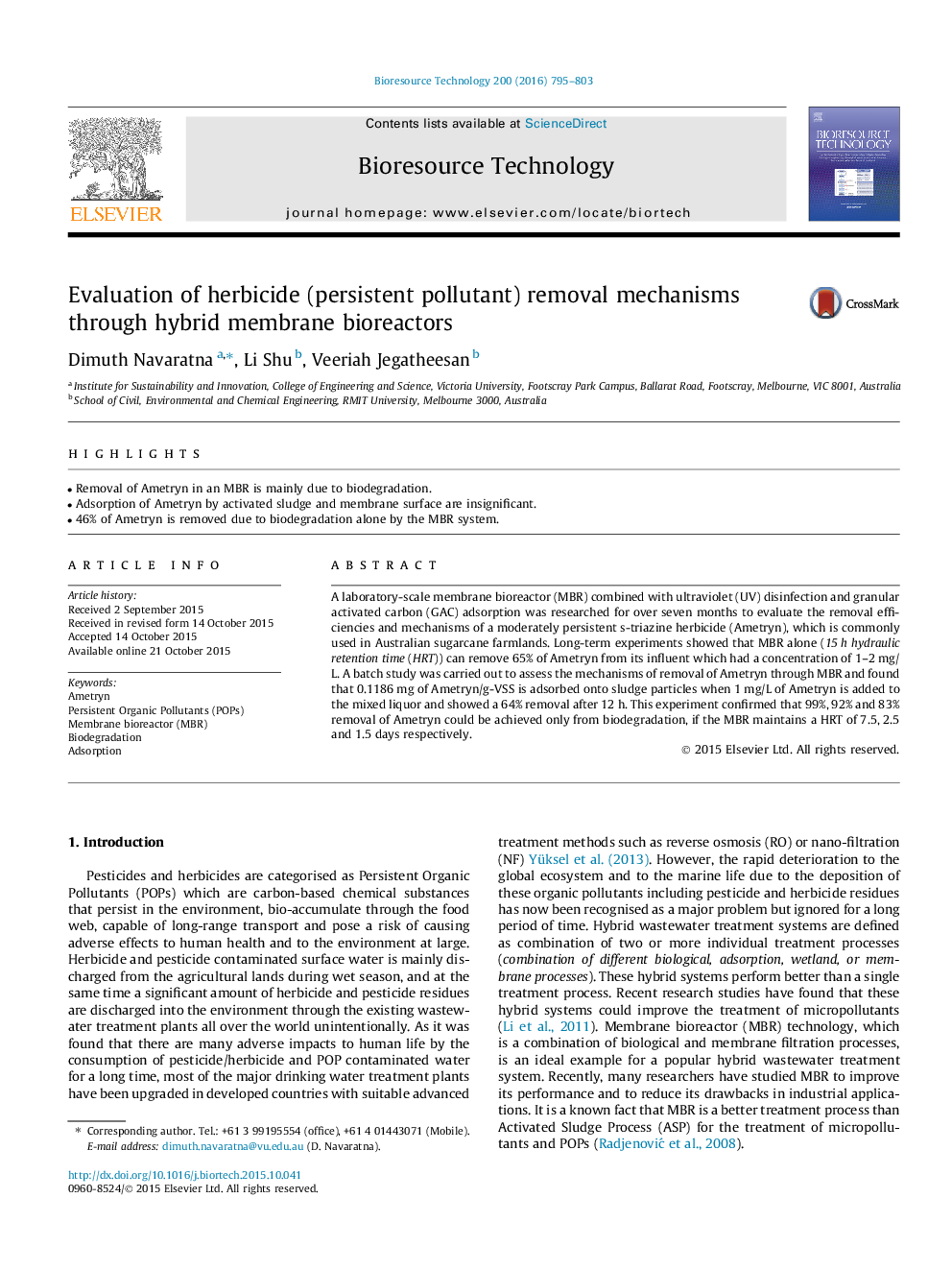| Article ID | Journal | Published Year | Pages | File Type |
|---|---|---|---|---|
| 7072736 | Bioresource Technology | 2016 | 9 Pages |
Abstract
A laboratory-scale membrane bioreactor (MBR) combined with ultraviolet (UV) disinfection and granular activated carbon (GAC) adsorption was researched for over seven months to evaluate the removal efficiencies and mechanisms of a moderately persistent s-triazine herbicide (Ametryn), which is commonly used in Australian sugarcane farmlands. Long-term experiments showed that MBR alone (15Â h hydraulic retention time (HRT)) can remove 65% of Ametryn from its influent which had a concentration of 1-2Â mg/L. A batch study was carried out to assess the mechanisms of removal of Ametryn through MBR and found that 0.1186Â mg of Ametryn/g-VSS is adsorbed onto sludge particles when 1Â mg/L of Ametryn is added to the mixed liquor and showed a 64% removal after 12Â h. This experiment confirmed that 99%, 92% and 83% removal of Ametryn could be achieved only from biodegradation, if the MBR maintains a HRT of 7.5, 2.5 and 1.5Â days respectively.
Keywords
Related Topics
Physical Sciences and Engineering
Chemical Engineering
Process Chemistry and Technology
Authors
Dimuth Navaratna, Li Shu, Veeriah Jegatheesan,
